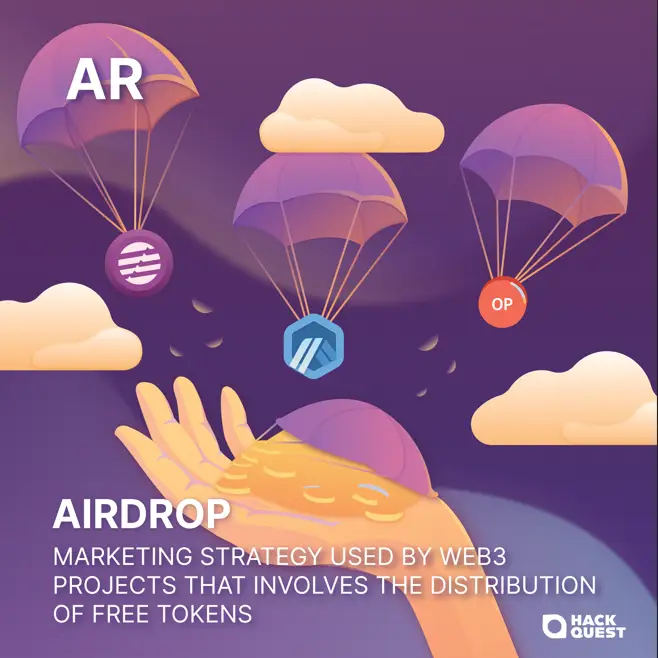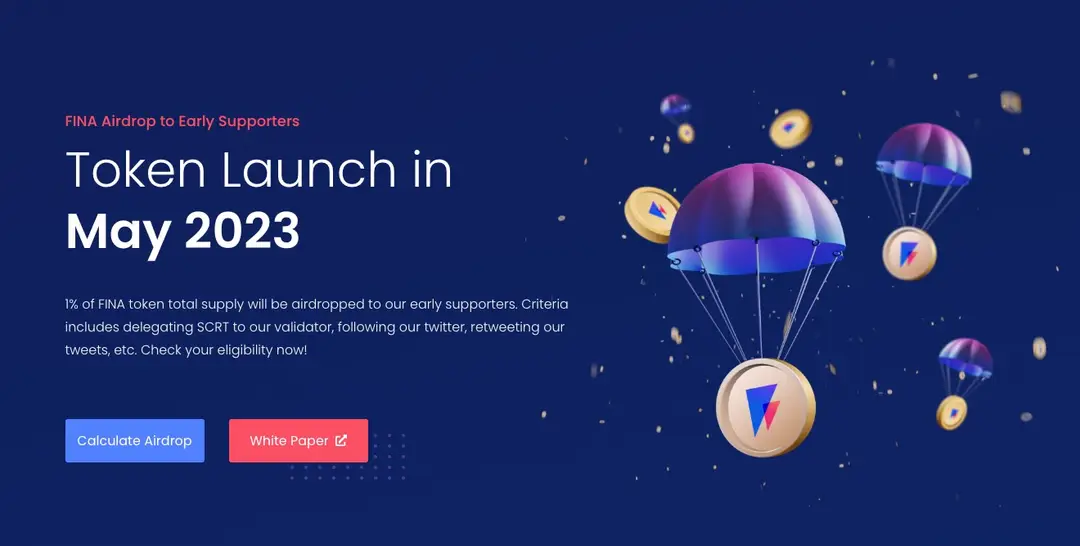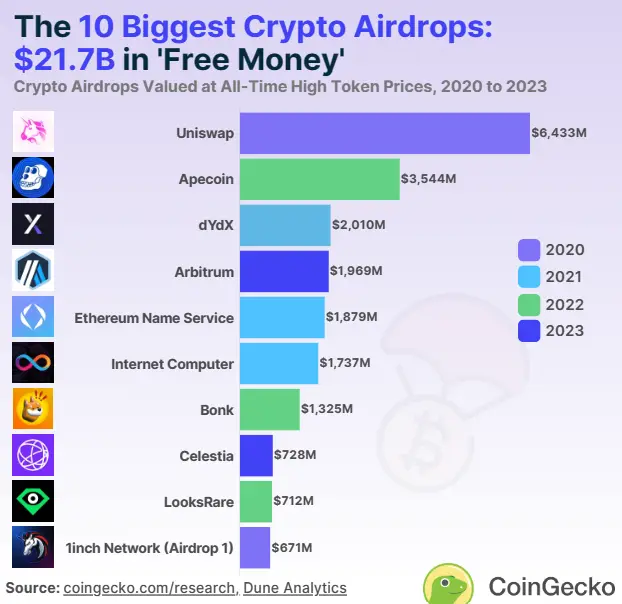Back
Airdrop
Slang
By HackQuest
Sep 12,20244 min readWelcome to the world of Web3, where cryptocurrencies, blockchain, and a unique culture converge. Entering the world of Web3 can be both thrilling and overwhelming, especially when faced with the seemingly cryptic language used by enthusiasts. Don't worry if you feel they sound like some secret codes, we are here to unravel their meaning in Web3 context. In this article, we are going to introduce [Airdrop].

What is the Meaning of Airdrop?
In cryptocurrency, an "airdrop" refers to the free distribution of digital tokens or assets to numerous wallet addresses. Blockchain projects use airdrops primarily to market new cryptocurrencies and reward dedicated platform users.
Example of an airdrop event:

The Origin of the Airdrop
The origin of the crypto airdrop traces back to March 2014 with Iceland's Auroracoin. This project aimed to replace the Icelandic króna and Bitcoin by distributing Auroracoins (AUR) to citizens. The distribution occurred in stages, and the amount of coins increased each time.
The idea was to create an initial market for the token and to promote it so that recipients could learn more about it. As Ethereum's gas prices increased, the high cost of sending tokens led to a change in airdrop methods. Projects shifted to a claim-based system, where recipients cover the transaction fees to claim their tokens. This adaptation aimed for sustainable growth in crypto projects and prevented the devaluation of tokens caused by indiscriminate distribution.

Different Types of Airdrop
1.Standard Airdrop: Involves sending a certain amount of cryptocurrency to users for completing simple tasks like subscribing to a newsletter or joining a whitelist.
2.Exclusive (Holder) Airdrop: Targeted at users who already own a certain amount of a particular cryptocurrency, the users will get rewards due to their loyalty.
3.NFT Airdrop: Distributed for various reasons, including promotions or for holding another NFT from the same collection. However, there's a risk of scams in this category, so caution is advised.
4.Hardfork Airdrop: Occurs when there's a permanent split (hardfork) in a blockchain, this enables new tokens to be distributed to holders of the old tokens.
Biggest Airdrops of All Time
The landscape of crypto airdrops has been marked by significant wealth distribution efforts, with the largest on record being the Uniswap airdrop, which distributed an unparalleled $6.43 billion worth of $UNI tokens. Hot on its heels, Apecoin's $3.54 billion airdrop and dYdX's $2 billion distribution followed, underscoring the substantial rewards offered to early adopters and ecosystem contributors. These top three airdrops alone account for 45.1% of the value among the top 50, highlighting the pivotal role of airdrops in promoting adoption and rewarding community loyalty within the crypto sphere.
The most active year for major airdrops was 2021, with 18 of the top 50 airdrops, demonstrating a clear surge in interest and activity as opposed to the 5 major airdrops of 2020. However, there was a notable decrease in 2022 and 2023, with 14 and 13 major airdrops respectively, which reflects a cautious sentiment during the 'crypto winter' bear market. Despite a lower incidence of high-value airdrops in recent years, the strategy remains integral to the crypto ecosystem's growth, especially as the market anticipates future bull runs.

What is Airdrop Farming
Airdrop farming is about collecting as many tokens as you can from various airdrops. It requires keeping up with upcoming airdrops and their specific needs. While it's tempting to join many projects just for these rewards, the real value lies in genuinely engaging with the blockchain projects behind these airdrops.

Why using Airdrops in Web3?
Today, other than token distribution, airdrops are multifaceted tools in the crypto space covering:
●Decentralizing governance: Distributing governance tokens to users for more democratic project decision-making.
●Rewarding community members: Recognizing and incentivizing the active participants of a platform.
●Marketing: Generating buzz and attracting new users to a platform or project.
●Evolving Strategies: Claim-Based Airdrops and Anti-Exploitation Measures.
Conclusion
Airdrops are like surprise party favors in the Web3 world, dropping tokens into the laps of early birds who catch the blockchain worms. They're a project's high-five to its first fans, building a tight-knit squad ready to ride the crypto wave together. So, if you're early to the crypto party, keep an eye out—your next airdrop might just be your ticket to the moon and back, all while having a blast with fellow crypto enthusiasts.
If you would like to learn more about Web3 slangs such as Airdrop, lmake a quick “drop” by our HackQuest Web3 Glossary!